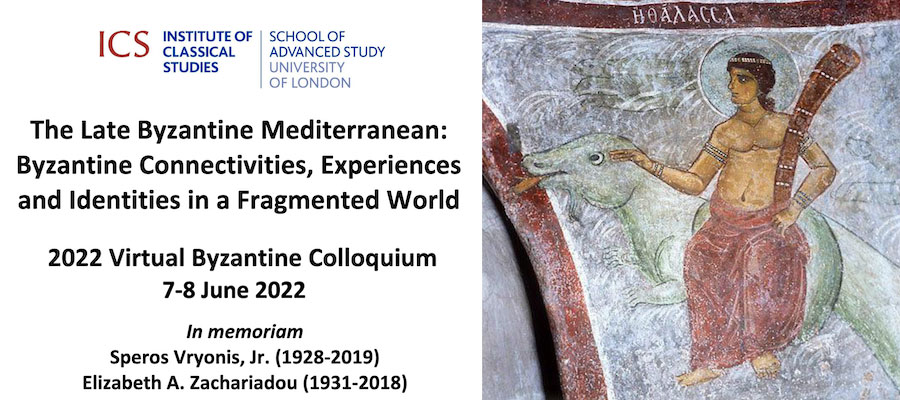The Late Byzantine Mediterranean: Byzantine Connectivities, Experiences and Identities in a Fragmented World, 2022 Virtual Byzantine Colloquium, Institute of Classical Studies via Zoom, June 7–8, 2022
The period between the two falls of Constantinople, namely the Crusader conquest of 1204 and the Ottoman conquest of 1453, witnessed the radical transformation of Byzantium from empire into a mosaic of autonomous and semi-autonomous polities. The fascinating survival and transformation of Byzantine identities in a world dominated by Latin Christian and Muslim powers was the result of complex dynamics, with Constantinople functioning, more or less, as a magnet for the Orthodox populations beyond its narrow political borders. Theodoros Metochites’ (d. 1332) rhetoric eloquently captures the ideological, spiritual and cultural radiance of the “Queen City”. In his laudatory oration on the Byzantine capital, Metochites describes Constantinople as “the citadel of the whole world” (ἀκρόπολιν τινὰ τῶν ὅλων) and the “shared homeland of all people” (κοινοπολιτεία πάντων ἀνθρώπων), stressing the city’s role as a centre, in both geographic and symbolic terms.
Over the past two decades, there has been a remarkable progress in the way scholars approach the history and culture of former Byzantine areas under Latin Christian and Muslim rule in the period between 1200 and 1400. The picture emerging from these studies embraces unity and diversity, interaction and contention, synthesis and conservativism, new identities and old. Research on the history of Mediterranean has also shown that the political, religious and cultural fragmentation of the Eastern Mediterranean increased, rather than restrained, the development of multiple connectivities, among the peoples inhabiting this vast liquid area. Yet, the nature and degree of bonds of unity between Late Byzantium and the former Byzantine lands —encompassing the physical mobility of humans and objects, as well as institutional, ideological, religious and cultural links— requires a more systematic and in-depth exploration.
The aim of this Colloquium is to re-address questions related to Byzantine connectivities, experiences and identities in Latin- and Muslim-ruled Mediterranean areas once belonging to the Byzantine Empire. Borrowed from graph theory, the term connectivities has been employed by Peregrine Horden and Nicholas Purcell to describe the networks connecting microecologies with similar structures in Mediterranean landscapes and seascapes, society and religion, politics and culture. Focusing on religion and culture as the main strands of identity preservation, negotiation and adaptation, our Colloquium wishes to examine the threads waving the tapestry of a “Late Byzantine Mediterranean”: a fluidly-defined κοινοπολιτεία under the enduring influence of Constantinople, but in constant communication and exchange with the religious and ethnic Other.
The Colloquium is dedicated to the loving memory of two great scholars, Speros Vryonis, Jr. and Elizabeth A. Zachariadou, who transformed our perception of the Byzantine legacy in the Eastern Mediterranean.
Advance registration required.
